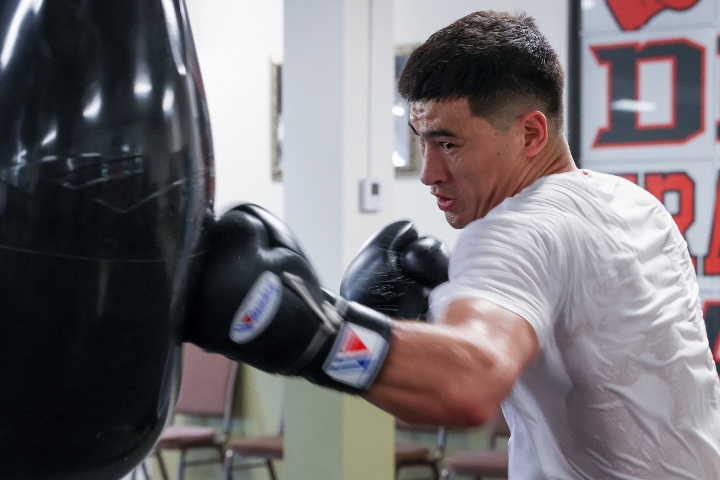Champion boxer Dmitri Bivol hits an aqua training bag. From boxen1.com
The martial arts are not violent. This is well known among any practitioner of the martial arts that have remotely grasped the principles of their training, unless if they are training in bad faith (they have a chip on their shoulder, they are learning for the wrong reasons, or they are bullies to begin with). Yet the idea persists because of a fundamental misunderstanding in society of what it is a boxer, karate-ka, or kung fu practitioner is doing. Yes, they are learning to become better punchers, grapplers, and so on. This could make them more formidable in a street fight or bar brawl (or maybe not: as the recent car that crashed into me from behind in December proves).
What they are doing is meditation in motion. The martial arts, as Bodhidharma and his Shaolin successors realized early on, are uniquely placed to teach the human body a form of mindfulness that is a cut above other expressions like walking meditation.
Once more, I am referring to the ideas of Laurence Brahm, a quantum practitioner of Vajrayana. Laurence is releasing a monthly series of videos with us about his films and music about the Lotus-Born Master. A filmmaker, entrepreneur, and alternative music producer, Laurence wears many hats. But in the field of martial arts, he holds a fifth-degree black belt in Shotokan karate and is a fourth-generation lineage holder in Zhangjia kung fu. He has extensively studied Wing Chun, qigong and Shaolin Five-Animal neigong. He is also a longtime practitioner of Tibetan secret yoga.
This treasury of experience enabled him to write a book (which was published in August, along with a film screening of his movie of the same name) about the true meaning of martial arts, which he envisions as “nine gates.” The book is titled, Gate of Nine Dragons: Searching for Kung Fu, and the nine gates he explores are: perseverance; loyalty; balance; change; centering; harmony; flow; emptiness; and wushu. “Mandala Butterfly” columnist Rebecca Wong interviewed him about his journey into the martial arts, which has thus far been a blend of deep personal involvement but also documentation and research.
From my own experience of boxing, which is my preferred combat sport, kinetic meditation is embodied in several training routines, in particular the speedball and skipping. Whether performing a kata in Goju-ryu karate, or practicing kicks and punches on the heavy bag, the practitioner of the martial arts enters a state of mindfulness, of singular focus on one objective. This objective, which could be as simple as a punch, involves turning the shoulders, hips, and foot and launching a powerful fist that “snaps” against the bag. All this while the fighter must keep his stance in alignment at all times (including maintaining his guard) while pivoting, shifting, or chasing.
If anything, “meditation in motion” can, in certain contexts, be even more difficult and taxing than still, sitting meditation, for it is easy to lose oneself in the adrenaline and excitement. This gets even more intense during pad work with a partner or a coach, where responsiveness and reflexes are part of the meditative engagement. This is a unique form of kinetic meditation present only in the combat sports or martial arts.
Do the martial arts replace Buddhist meditation and learning? Of course not. And there are too many posers in the martial arts world that market themselves as gurus of higher insight. Nevertheless, Laurence Brahm and many others have found martial arts an effective supplement to the spiritual path. The expression of human potential and power should be harnessed for those who would serve and protect the Dharma.
Related features from BDG
Echoes of the White Crane: Laurence Brahm’s Tale of Martial Arts as Kinetic Meditation
Buddhism and the Martial Arts: A Conversation with Scott Park Phillips


